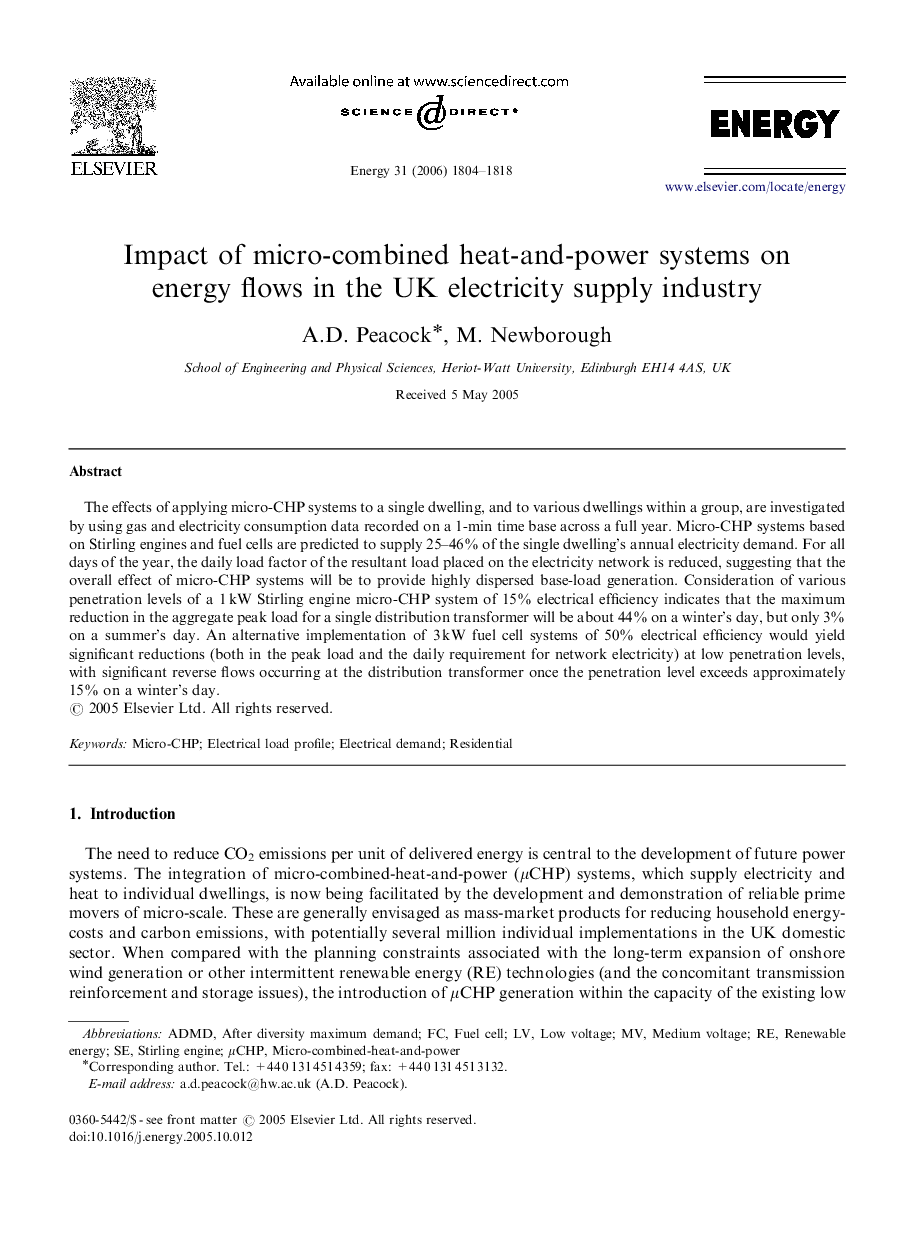| Article ID | Journal | Published Year | Pages | File Type |
|---|---|---|---|---|
| 1736157 | Energy | 2006 | 15 Pages |
The effects of applying micro-CHP systems to a single dwelling, and to various dwellings within a group, are investigated by using gas and electricity consumption data recorded on a 1-min time base across a full year. Micro-CHP systems based on Stirling engines and fuel cells are predicted to supply 25–46% of the single dwelling's annual electricity demand. For all days of the year, the daily load factor of the resultant load placed on the electricity network is reduced, suggesting that the overall effect of micro-CHP systems will be to provide highly dispersed base-load generation. Consideration of various penetration levels of a 1 kW Stirling engine micro-CHP system of 15% electrical efficiency indicates that the maximum reduction in the aggregate peak load for a single distribution transformer will be about 44% on a winter's day, but only 3% on a summer's day. An alternative implementation of 3 kW fuel cell systems of 50% electrical efficiency would yield significant reductions (both in the peak load and the daily requirement for network electricity) at low penetration levels, with significant reverse flows occurring at the distribution transformer once the penetration level exceeds approximately 15% on a winter's day.
